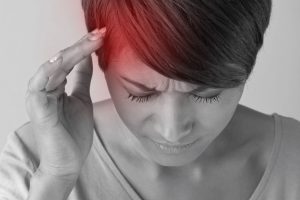Everything you need to know to tame your pain – Part 3
A short recap of all you need to know to tame your pain so far…
I’ve worked as an osteopath and a university neurosciences lecture for the better part of 2 decades. In that time our understanding of pain has changed enormously. Everything we thought we knew about pain has been tipped on its head. This has meant that myself and my colleagues have had to work hard, to keep our practice teams and the profession moving with the science on pain.
As a lecturer I spend a lot of time banging on about the value of pain education, because getting the best possible outcomes for our patients means that therapists and patients need to be on the same page. We need to share the same understanding of the problem and the same goals for treatment. We need to work as a team, always pulling in the same direction.
To that end, this series is really to help patients understand the science. So that they can be empowered to create positive change in their life. It is literally the most important things I want them to know, to help them pave the way to recovery.


The recap
From part 1
- Knowledge is power so if you haven’t done so yet, get back to the first blog and follow the links in the resource section. There is some real gold in there. Get schooled and get in control of your recovery.
- Pain does not equal tissue damage, and more pain does not equal more damage. That does not mean that the pain without tissue damage is not real, and it definitely does not mean the pain is in your head. It just means that the pain itself is the problem, the pain is the pathology that needs treating. We need to treat the pain, not the part of the body you feel the pain in. There is a subtle but critical difference there.
- Pain is protective and when we work with our nervous system to decrease the perceived threat it’s responding to, pain will typically subside. When it doesn’t, we have chronic pain and chronic pain is different to acute pain. It is a totally different beast.
From part 2
- Chronic pain is different to acute pain. It persists well beyond the time taken for tissues to heal and results more so from nervous system changes than from poor healing. These changes essentially make the nervous system much more sensitive, meaning it produces more pain and inflammation with less or sometimes even no provocation at all.
- Multiple pain sites and recurrent episodes of familiar pain are still chronic pain. These types of pain typically occur not because an old injury has failed to heal but because our normal protective responses have hung around long after the injury healed.
- Pain will create musculoskeletal findings because the nervous system controls our muscles, joints, and movement. As such the nervous system changes that cause pain often also cause changes to our muscles and joint etc. These musculoskeletal findings reflect the state of the nervous system. They are not the cause of the pain we experience. They are symptoms of nervous system dysfunction.
Pain is not caused by weakness.
It is not caused by bad posture,
nor by joint misalignment!
Pain is not the result of weakness, bad posture or some sort of joint misalignment.
7. This ties in with point 6 from the last blog, that pain causes musculoskeletal findings, and if you’ve grasped that concept well, this should be a natural follow on.
Essentially posture and positional changes, weakness, stiffness etc. are all part of the musculoskeletal symptoms generated by alterations in nervous system function. More than likely these changes are part of a package of protective functions that are activated when we’re under threat or vulnerable. Generally speaking, they serve recuperative or defensive functions to ensure safety and/or a fast getaway BUT when they hang about for too long, they become more of a hindrance than a help.
We so often experience these musculoskeletal changes with pain because they are generated by the same underlying nervous system changes that generate pain, so they tend to occur simultaneously. But it’s really important to understand that correlation is not causation, the relationship between pain and these other symptoms can and frequently does work in both directions.
I can’t ‘fix’ your back or your pain…
8. This probably sounds pretty funny coming from an osteopath, and it may make you think that I’m not a very good osteopath but on the contrary… I am a very experienced osteopath who is simply being honest about what actually happens when our bodies recover from pain and injury, and what happens when we as therapists, try to reduce people’s pain. The truth is though, only your body can heal itself and only your nervous system can deescalate it’s level of protection – we merely facilitate. Disappointing but true.
So now you’re probably wondering why you’d come see me at all if I can’t fix you… but bear with me, there is much I can do to help you get better!
The first thing I have to work out when you come to see me is – is there and actual tissue injury or is there pain despite the tissues being uninjured or adequately recovered from injury already?
When you have an injury with actual tissue damage I can only really help to make you temporarily more comfortable, and to try to remove any physiological barriers to healing. I will also help to ensure that you understand the injury and how to engage with it in ways that will promote a faster and fuller recovery. As your tissues heal, your nervous system will naturally become less sensitive and protective and your pain will dissipate.
If there is no injury or it’s actually recovered and you still have pain from a persistently sensitive and protective nervous system – there are still a heap of things I can do! Some of these things are hands on treatments for the nerves themselves, these are from the patient perspective, much like the joint movements and muscle massages you’d expect from an osteo. The others are again about helping you understand the nature of your pain and how to engage with it in ways that will promote a faster and fuller recovery. The nervous systems typical set point is to have no pain and we just need to work toward re-setting your set point.
Either way, there will be much to do. I will be removing barriers to recovery and you will be doing the actual work of fixing yourself. That may not be the scenario you were hoping for but that’s just how it works.
Stay tuned for the next and last installment and I’ll round the series off with what we know actually works.
To learn more about your pain and the best ways to tackle it, stay tuned to our blog for the next part in the series. If you’re struggling with pain and need help to tame the beast, come visit us at 632 Queensberry street North Melbourne, call us on 03 83703044 or book online now. We’re here to help!



